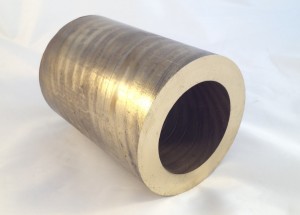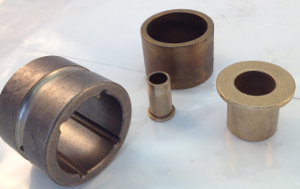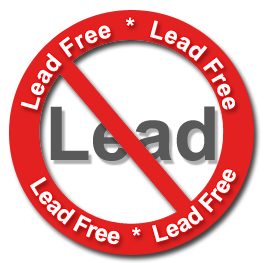Important Features of Aluminum Bronzes
Taken from the Primer for Sleeve Bearing Design, the following excerpt is valuable information for anyone designing aluminum bronze components.
Important Features of Aluminum Bronzes
Non-Sparking: The non-sparking characteristics make the aluminum bronzes suitable for manufacturing of tools, equipment for petroleum and chemical processing, in mine service, handling explosives and in gas equipment.
Cold Working Capability: The aluminum bronzes with less than 8% to 10% aluminum content are most suitable for cold working into tube sheets, flats, wires and other modified configurations.
Hot Working Capability: The aluminum bronzes with 8 to 10% aluminum content result in progressively increased mechanical strength and hardness of the alloy, requiring them to be hot worked. The hot working temperatures range from 1300 degrees F and up.
Corrosion Resistance: The aluminum bronzes have outstanding corrosion resistance for marine, chemical and in atmospheric service because of its rapid formation of an aluminum oxide film. If the film is damaged, scratched or abraded, this oxide film is self-healing and reforms almost immediately. The aluminum bronze alloys are resistant to exposure, to chlorides and similar other chemicals and to many acids.
Oxidation Resistance: The aluminum bronzes are suitable for all air and steam in the temperature service up to 750 degrees F. They do not lose their mechanical strength as rapidly as the manganese bronzes or other leaded and tin bronze alloys. They are generally considered for temperature service.
Magnetic Permeability: The aluminum bronzes have magnetic permeability often less than 1.07 at 200 oersteds. They are used in highly stressed, rotating, non-magnetic parts.
Electrical Conductivity: The aluminum bronzes have a relatively low value of electrical conductivity compared to copper. The IACS percentage drops as much as 75% of the original value.
Thermal Conductivity: Metals with high electrical conductivity usually transfer heat well, too. The aluminum bronzes, as other copper based alloys, have better heat dissipation properties required for bearing service than steel, cast iron and other ferrous metals. The average aluminum bronze thermal conductivity value is about 15 % of that of copper taken as 226 BTU/square foot/hour/degree F 68 degrees F.
Thermal Expansion: Copper based alloys have a higher thermal expansion and contraction values than many other metals. Their approximate average expansion and contraction values are twice that of steel or cast iron. This is why it is necessary to adjust mating sizes if higher or lower than normal ambient temperature service is involved.
Heat Treatment of Aluminum Bronzes: The aluminum bronzes with more than 9.5% aluminum content with small additions of iron, nickel or manganese which are added for specific properties (such as higher hardness, wear resistance, fatigue strength, etc.) can be heat treated to enhance these properties more. Heat treatment increases the tensile and yield strength and hardness of the alloy but the elongation is somewhat reduced. The heat treatment of aluminum bronzes involve bringing the casting up to 1650 degrees F (900 degrees C) for two hours per inch of section thickness with a water or oil quench followed by at tempering treatment, the temperature of which must be selected in correct combination of strength hardness and ductility. This second treatment generally is done at 1000 to 1150 degrees F for one hour of section thickness.
Stress Relieving: Stress relieving may be required when the copper based alloy is used for bearings that are split longitudinally or when the stresses in the alloy from casting or other operation must be removed so as not to cause dimensional changes after machining the split. Such stresses may be removed or minimized by heating the casting, or semi-finished part at 1000 degrees F for an hour per inch of section thickness, followed by cooling in air (without quenching). For stress relieving leaded and tin bronzes, this temperature should be reduced to 600 degrees F.
Wear Resistance: Tests have proven that aluminum bronzes have better wear resistance than the leaded tin bronzes, tin bronzes, and manganese bronzes.
Follow these links for more information on Aluminum Bronze Alloys:




